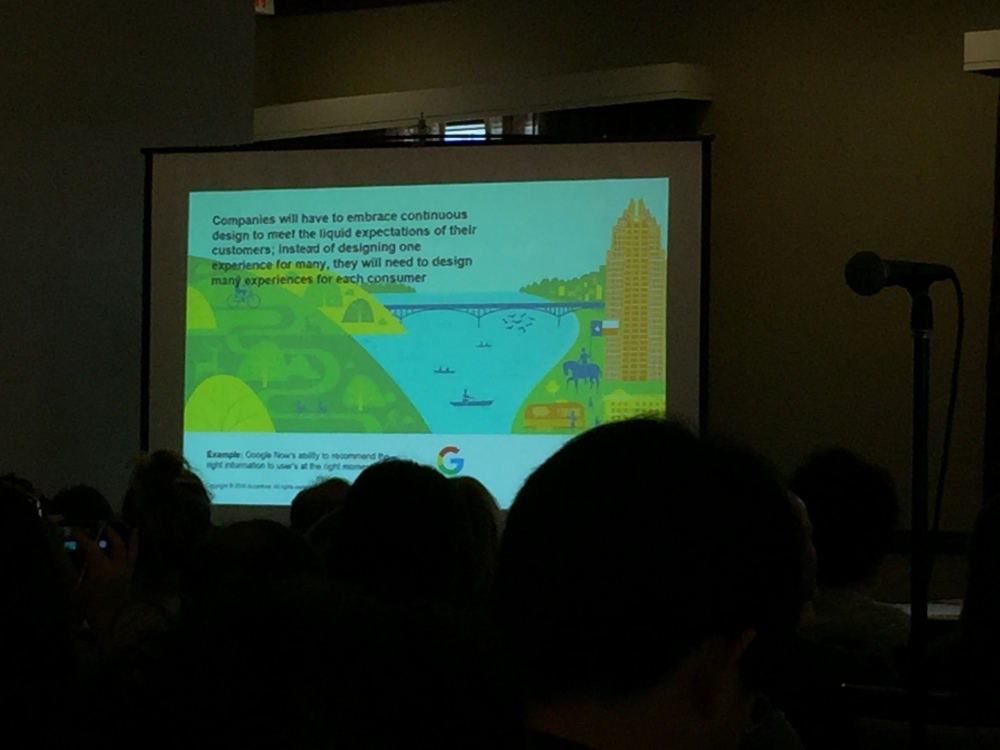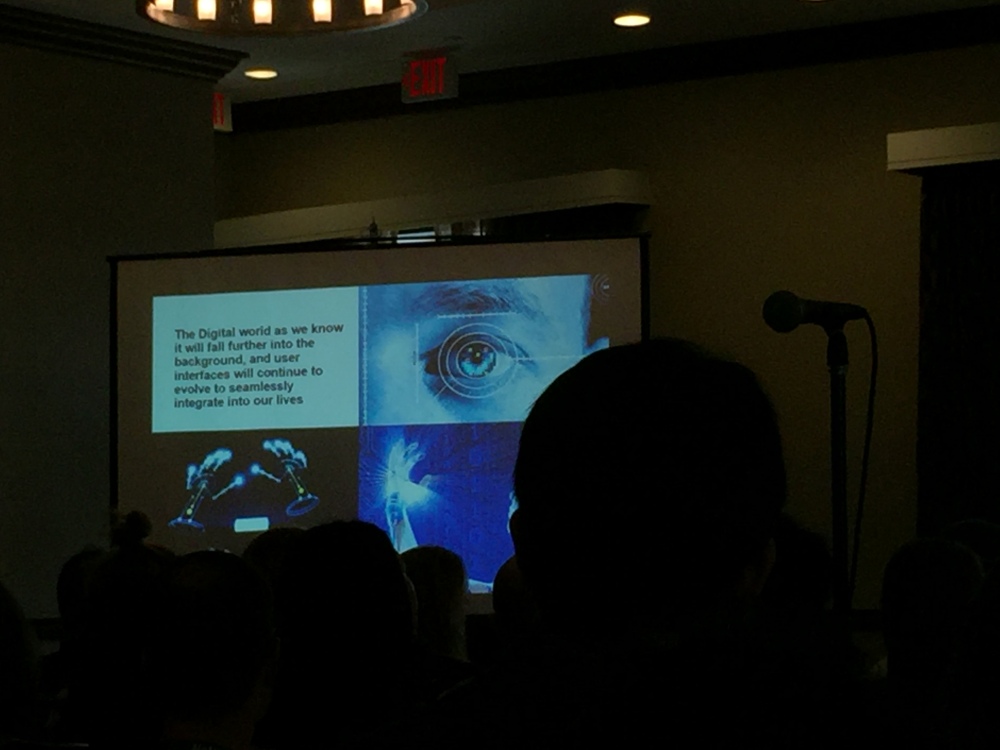Read if…you’d like to know the Managing Director of Accenture Digital’s views on the role of design and technology now and in the future.
The Then & Now
In 1980 a gig of RAM cost $6million, in 2000 it would set you back $1100 and now it can be yours for around $4. This advancement in technology has not only lead to plummeting storage costs but also the volume of recorded information in existence – 90% of all of the data that exists has been created in the last 2 years.

The pace of technological innovation has created a world rich with connections and interactions across devices and technologies. To thrive in this ‘connected everything’ ecosystem a human-centered approach is key and to this end the role of the designer has fundamentally changed:
- They must design with evolutionary capabilities in mind – their product needs to adapt to technological progress down the line.
- They must design for anticipation – we now want platforms to anticipate our needs. Personalisation is becoming an expectation.
When human-centred design is applied it can have a huge impact on behaviours – even within those industries which you wouldn’t deem ‘digital’.
- 21% of Starbucks transactions now take place on a mobile (for payment or ‘order and pay’).
- Sports apparel brands are looking to link the experience to the product with Under Armour buying MyFitnessPal, Adidas buying Runtastic and Asics buying Run Keeper.
- Amazon Dash, Target & Instacart and Xiaomi & Uber are changing the way that transactions and delivery are carried out.
- 40% of Dominos orders worldwide are facilitated digitally (70% in some markets).
Accenture have worked with Visa to enable contactless payments in car for a frictionless transaction experience – essentially your car is the interface for your payment.
The Future

We need to keep the human centred approach in mind when continuing to innovate. It is expected that by 2020, 40 trillion gigabytes of data will have been created…and that 1gb of RAM will cost less than $1. Expectations will continually evolve, so we need to design many experiences for one person as opposed to one experience for many.
Google Now already does this – it delivers against ‘liquid expectations’ through customised, anticipatory experiences tailored to each user.
Nest is another example of this, the tech adapts to and ‘learns’ from your behaviour to anticipate what it thinks you want it to do at a given time (auto-away for instance will assume you’re out of the house based on past activity at that time, on that weekday).
Virtual reality will allow brands to offer unique experiences with their products and services, whilst augmented reality will facilitate hyper-personal, contextual, hybrid experiences. Both technologies will give brands the power to ‘infuse experiences with technology’.
AI will evolve to simplify our lives, Insurify for instance builds bespoke insurance quotes using SMS communication with a bot. This exemplifies the key considerations for success in the future – a seamless, human-centric experience which allows for scale.
Ultimately technology is embedded in our lives and will become increasingly seamless and integrated to the point of becoming invisible.